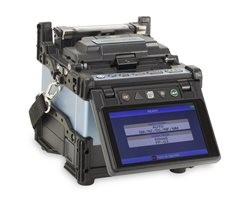For repair and technical support, contact maintenance service center address described in the back cover.
Arc problems
The electrodes typically need replacement after 1000 splices. Some common symptoms that indicate the electrodes need replacing are:
- Fluttering or unstable arc observed on the monitor
- Sizzling noise while arcing
- Bubbles in the fibers after splicing
- Fiber burned in half
- Diameter faults
- High or inconsistent splice losses
Refer to page 35, “Replacing electrodes” for procedures.
If an electrode tip touches something, it will be deformed, causing poor arcing problems. Take care of the handling of electrodes.
Fiber breaking
When the splicing process is complete, a proof test may be performed on the fibers while in the fiber chucks. If the fibers are breaking when the proof test is performed, re-do an arc test. If the arc power level is too weak, the splice may be poor, resulting in fiber breaking.
If the fibers are breaking in spite of a good arc test result, clean the V-grooves and the bare fiber pads completely. Deterioration of a jacket remover/fiber cleaver may lead to fiber breaking. Clean the jacket remover/fiber cleaver completely.
Splicer does not power up
- If the fusion splicer fails to turn on when the ON key is pressed, check the following:
- Verify that the power supply module or battery module is installed in the module bay properly
- Verify that the power plug is seated properly (the power cord is connected to the power supply module.)
- Verify that the LED of the power supply module lights up.
- If using battery operation, ensure that the battery module is fully charged.
If the splicer still does not power up after checking the above, contact our maintenance service center.
